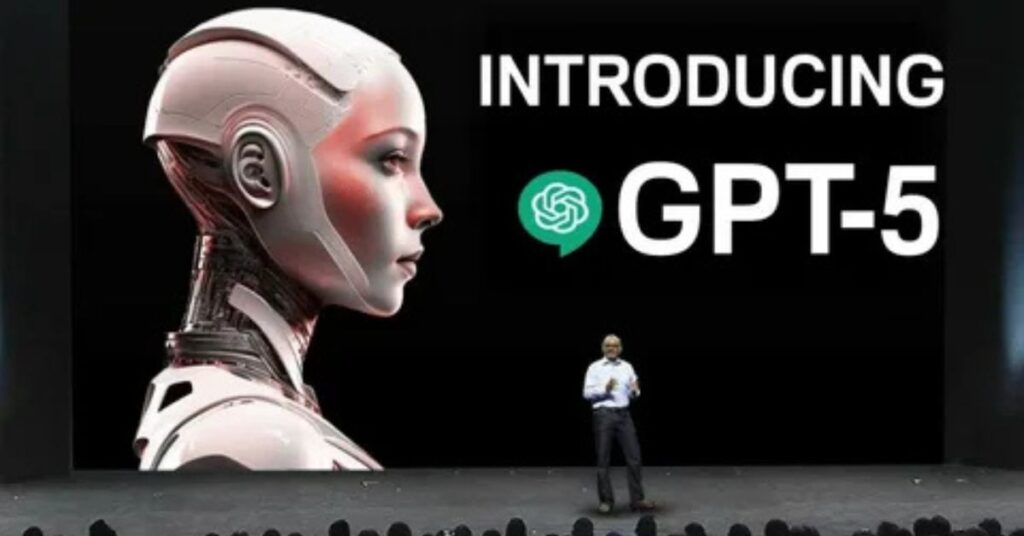Artificial Intelligence (AI) is progressing at an unprecedented rate, and GPT-5 is one of the milestones that will make history in the way artificial intelligence is concerned. The GPT-5 created by the same people as ChatGPT, OpenAI, can be described as the developed model of artificial intelligence that is more human-like and intelligent than any other in its category.
So what is GPT-5? What is the mechanism? And more to the point, how will it effect our day to day life, our employment, and our society?
Here, in an exhaustive guide, you will learn:
- What is GPT-5 and why is it about?
- The brief workings of GPT-5
- Its major characteristics and practical implementation
- The contrasts between GPT-5 and GPT-4
- Pros and cons of GPT-5
- And when it will be released and what next to expect
By the end of that, you will know everything about GPT-5 in its entirety- but not having to study a degree in computer science.
What is GPT-5?
Generative Pre-trained Transformer 5 (GPT-5) is the fifth form of Large language models (LLMs) OpenAI. It is an expansion of the capabilities of GPT-4 which drives the current ChatGPT offering, but introduces radical advancements in reasoning, context memory and multimodal processing.
Here is what is special about GPT-5:
- Humanlike cognition Capable of interpretations more than simple instructions.
- Bigger memory: Is able to take in much more of the discussion (possibly more than 100,000 tokens).
- Multimodal: operates using text as well as images, and may use audio/video within a single interface.
- Personalization: Able to respond to your tone/style and preferred manner of working.
Conclusively, GPT-5 will not only be an upgrade to chatbots but a significant step in the development of artificial intelligence departments that can think, understand and help more in the same manner, as humans do.
To get into a more technical perspective, the researchers of the OpenAI team have given a theory on transformers which was used to drive the GPT models.
How Does GPT-5 Work?
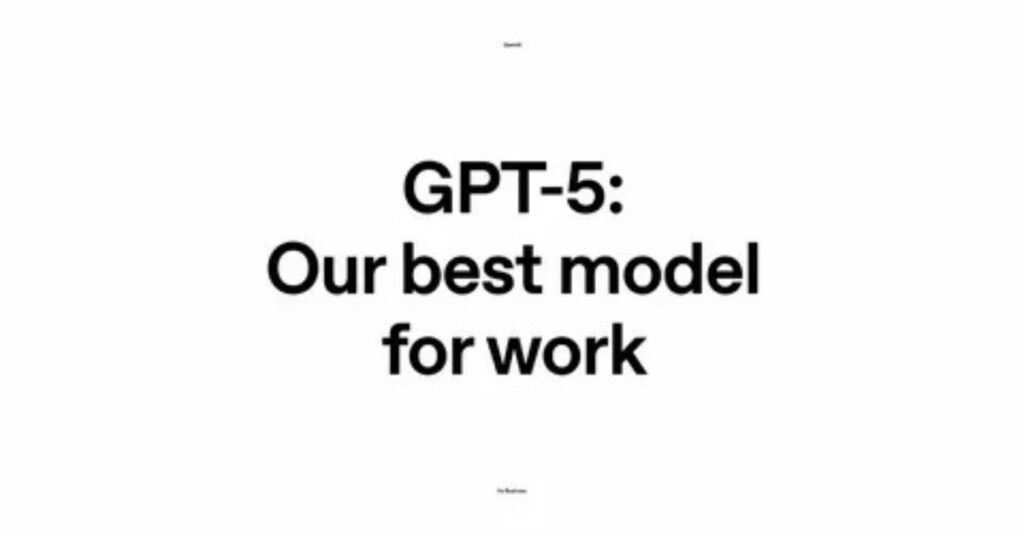
What GPT-5 essentially uses is an AI neural network architecture developed on a transformer network (NLP Specific neural network architecture).
In a nutshell, that is how it works:
- Training on large scale datasets
GPT-5 trains on very large volumes of text data on books, articles, websites, and research papers.
- Learning patterns
Rather than memorizing text, GPT-5 studies patterns in language, how words, ideas and facts are inter-related.
- Tweaking in terms of safety and usefulness
GPT-5 is trained by OpenAI to take instructions and learn to avoid dangerous information and remain focused.
- Real-time concept of generating answers
GPT-5 is able to accurately guess the most contextual and relevant answer to a question you will type, just as a human assistant who knows all the context well.
To read more on the subject, this elaborate description of transformers would be of great assistance in case you would want to learn more.
Key Features of GPT-5
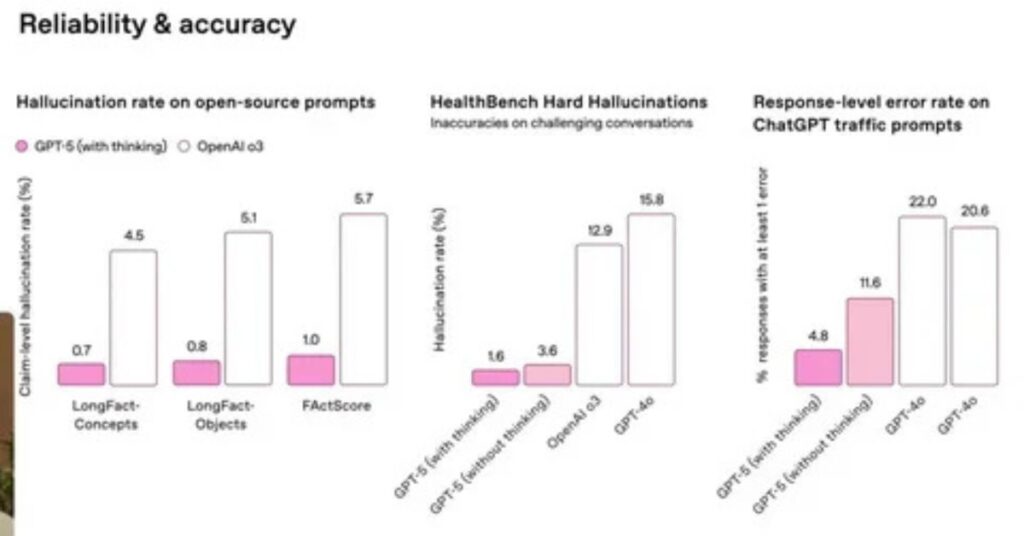
It has a list of amazing features that GPT-5 has to offer, and that is exactly what makes it so essential in leaving behind such a gap.
- Higher-order Reasoning
Appreciates difficult tasks of all types, such as sets of reasoning, such as doing math, analysing a legal case, or creating a game plan.
- The bigger context window
GPT-5 has the ability to recall and process significantly larger amounts of your conversation history, so you have to say “I can not remember what we were discussing” less frequently.
- Multimodal Capabilities
In contrast to the previous models, GPT-5 should handle several types of inputs: text, images, and conceivably audio or video.
- Personalization
Discovers what you like, say, write in your style or propose something in your field.
- Better Accuracy & Speed
Generates more applicable solutions quicker, even in the most refined of subjects.
GPT-5’s reasoning and data analysis abilities go far beyond chatbots; it is also revolutionizing industries like logistics and operations. You can explore the successful role of AI in optimizing supply chain operations to see how next-gen technologies are boosting global efficiency.
GPT-5 vs GPT-4
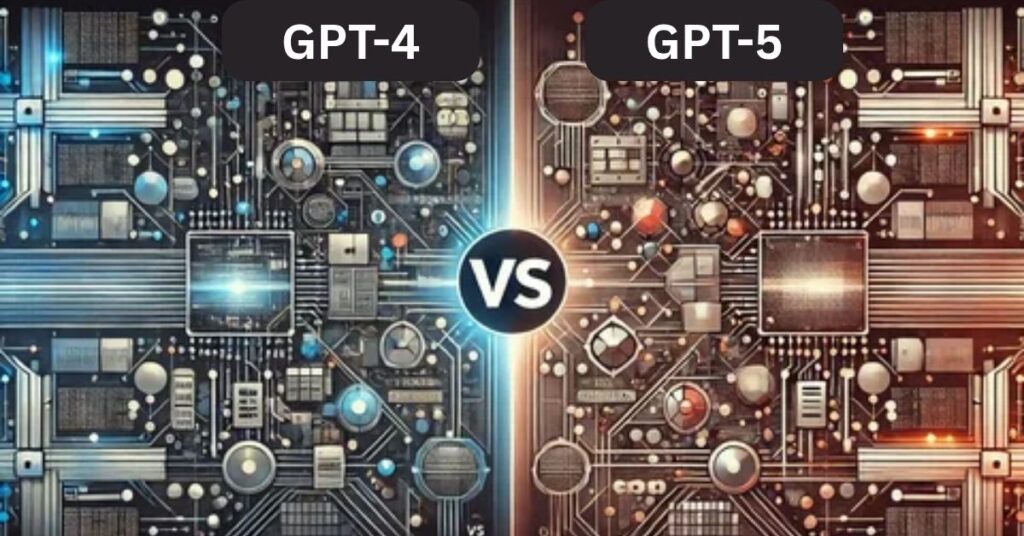
| Feature | GPT-4 | GPT-5 |
| Reasoning Skills | High | Exceptional |
| Context Memory | ~8K–32K tokens | 100K+ tokens (estimated) |
| Multimodal Support | Limited (images only in some versions) | Advanced multimodal processing |
| Speed | Slower | Faster |
| Personalization | Basic | Highly adaptive |
You know that GPT-4 is already very powerful, in case you have used it in ChatGPT Plus. The gains of GPT-5 translate to conversations lasting longer, a more correct research session, and a denser generating imagination.
Real-World Applications of GPT-5
The GPT-5 may have massive applications. Some of the industries where it shall prove a difference include the following:
- Education: Personalised AI tutors, instant homework help, interactive learning.
- Business & Marketing: She can write the advertisements, generate content, and analyse market data within seconds.
- Software Development: writing and debugging software promptly than ever before.
- Medical practice: Helping the doctors with research and documentation (and not displacing medical practitioners).
- Creatives Industries: Composing music, storyboarding and writing novels.
As TechCrunch stated, artificial intelligence such as GPT-5 might reshape productivity in various industries, even more, when applied along the automation tools.
Example
A marketing startup used GPT-5 to generate personalized ad campaigns tailored to each customer’s preferences and emotional tone. By analyzing real-time customer data, search intent, and behavioral patterns, GPT-5 crafted compelling ad copies that resonated deeply with target audiences.
Within just three months, the company reported a 45% increase in engagement rates and a 30% boost in conversion efficiency. This success story highlights how next-generation AI like GPT-5 can redefine digital marketing strategies, enhance creativity, and deliver data-driven results faster than traditional methods.
Benefits of GPT-5
- Time-saving tool as it automates the repetitive writing and research, allowing professionals to focus on creativity and strategic thinking, a key advancement in AI-powered productivity.
- Enhances speed in matters of content production and problem-solving, delivering instant, data-backed insights for faster decision-making across business and technology workflows.
- Makes it easier to access facilities for people with disabilities, bridging the digital divide through AI-driven accessibility tools like voice interaction and real-time translation.
- Provides better answers to complicated questions, using deep learning and contextual understanding to ensure more accurate and human-like AI responses.
- Learns your habits to adjust to your needs over time, turning into a truly personal AI assistant that evolves with user preferences and behavioral patterns for smarter automation.
Limitations & Concerns
GPT-5 is not flawless, though:
- Misinformation possibilities: It still has the capability of producing incorrect or obsolete information.
- Bias in responses: The AI models can be biased based on the training data it has been taught on.
- The risks of job automation: There are some opportunities that an AI will replace or modify.
- Ethical issues: AI applications in such sensitive areas as law or medicine should be under close scrutiny.
As GPT-5 becomes more integrated into business operations, ensuring data security and privacy is essential. Before implementing AI systems, explore essential cybersecurity tips for small business owners to safeguard their organization from potential risks.
For a critical perspective, see MIT Technology Review’s coverage on AI risks.
GPT-5 Release Date
OpenAI has not revealed the exact date of release of GPT-5 yet, although they provide early access to a small group of developers. We will likely see the public release later in 2025, potentially with ChatGPT Plus integrations and API support.
The company is reportedly conducting closed beta testing to ensure the model’s accuracy, safety, and multimodal performance before full deployment.
As per industry insights, GPT-5 might debut alongside upgraded tools in the OpenAI ecosystem, making it one of the most anticipated AI model launches of 2025.
The Future of GPT-5 & AI
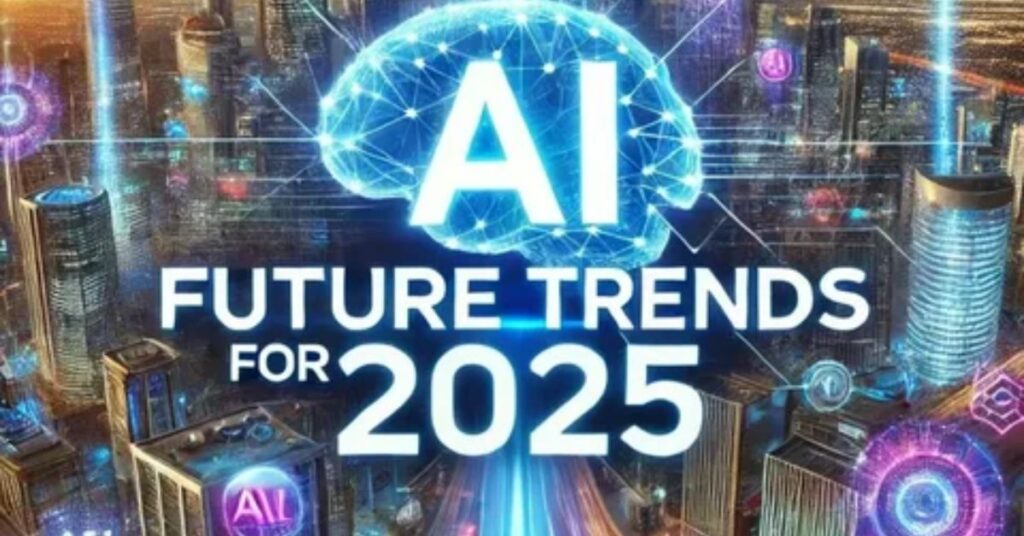
GPT-5 is probably only the starting point. In the future, it may be possible to:
- Get a better comprehension of emotions and tone. Future AI models like GPT-5 could interpret human emotions more accurately, enabling empathetic conversations and emotionally intelligent virtual assistants.
- Get real-time learning on all the news and events. With real-time data integration, GPT-5 might continuously update itself on global events, market trends, and scientific discoveries, making responses more current and context-aware.
- Take part in scientific studies by cooperating with people. Advanced AI collaboration tools powered by GPT-5 could assist researchers in data analysis, hypothesis generation, and simulation, accelerating innovation across industries.
- Provide completely customised AI experiences to each user. Using personalized AI algorithms and adaptive learning, GPT-5 could tailor its tone, content, and workflow preferences to create a truly individualized AI experience.
Final Thoughts
GPT-5 will be a significant step in AI understanding, producing, and reasoning similar to human beings. Those who are students, business owners and technology enthusiasts will all be presented with new opportunities in the ways we work, learn and create with GPT-5.
Nevertheless, like any other AI tool, this one should be used responsibly. What GPT-5 will become will not only depend on what it can do, but ourselves and our willingness to use it.
FAQ’s
Is GPT-5 available now?
Not yet fully public, currently in limited testing by OpenAI with select developers.
As of 2025, GPT-5 is not yet available to the general public. OpenAI is currently running beta testing with a small group of developers, researchers, and enterprise clients to evaluate performance, safety, and reliability. This staged rollout allows OpenAI to collect feedback, fine-tune the model, and address any safety or ethical concerns before a wide release.
According to industry reports (TechCrunch and The Verge), GPT-5 is expected to be more powerful and versatile than GPT-4, offering advanced reasoning skills, larger context memory, and expanded multimodal capabilities. However, OpenAI has not officially announced a fixed GPT-5 release date.
If history is a guide, GPT-5 could be integrated first into ChatGPT Plus and OpenAI API products before becoming widely accessible. For official updates, keep an eye on OpenAI’s blog or subscribe to their developer newsletter.
Is GPT-5 better than GPT-4?
Yes, GPT-5 offers significant improvements in reasoning, speed, and multimodal capabilities.
GPT-5 is widely anticipated to be a major upgrade over GPT-4 in several areas:
Advanced Reasoning: Handles multi-step logic and complex problem-solving with fewer errors.
Larger Context Window: Can remember and reference much longer conversations or documents, potentially over 100K tokens compared to GPT-4’s ~8K–32K.
Multimodal Support: Understands not only text but also images, audio, and possibly video.
Faster Response Times: Optimised for both speed and accuracy.
Personalisation: More adaptive to user preferences and style.
Independent AI testers and researchers (MIT Technology Review) suggest GPT-5 could narrow the gap between human and machine reasoning even further. While GPT-4 remains excellent, GPT-5’s deeper contextual understanding and expanded capabilities make it better suited for advanced applications like AI tutoring, creative content generation, and complex data analysis.
Can GPT-5 understand images and audio?
Yes, GPT-5 includes advanced multimodal capabilities, meaning it can process text, images, and audio.
One of the most groundbreaking features of GPT-5 is its multimodal AI design. This means GPT-5 is not limited to text-based inputs and outputs: it can also interpret images (e.g., identifying objects, describing scenes, analysing diagrams) and audio (e.g., transcribing speech, recognising accents, extracting meaning).
Multimodal AI is not entirely new; OpenAI’s earlier models like GPT-4 with Vision and Whisper for speech recognition laid the groundwork. However, GPT-5 integrates these capabilities into a single, unified model, improving efficiency and contextual awareness.
For example, GPT-5 could:
Look at a chart and explain market trends.
Listen to a podcast clip and summarise the discussion.
Generate a tutorial by combining visual and spoken instructions.
According to OpenAI’s research, these multimodal features are being tested for accessibility tools, education, and content creation. This makes GPT-5 more versatile and useful for industries where multiple data types are involved.

